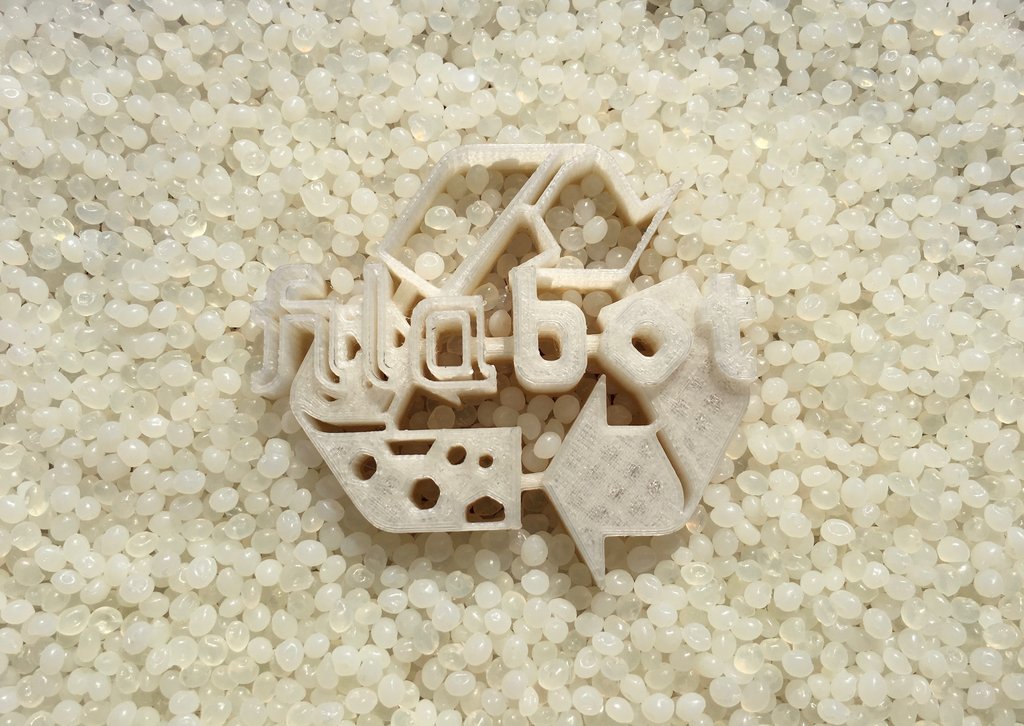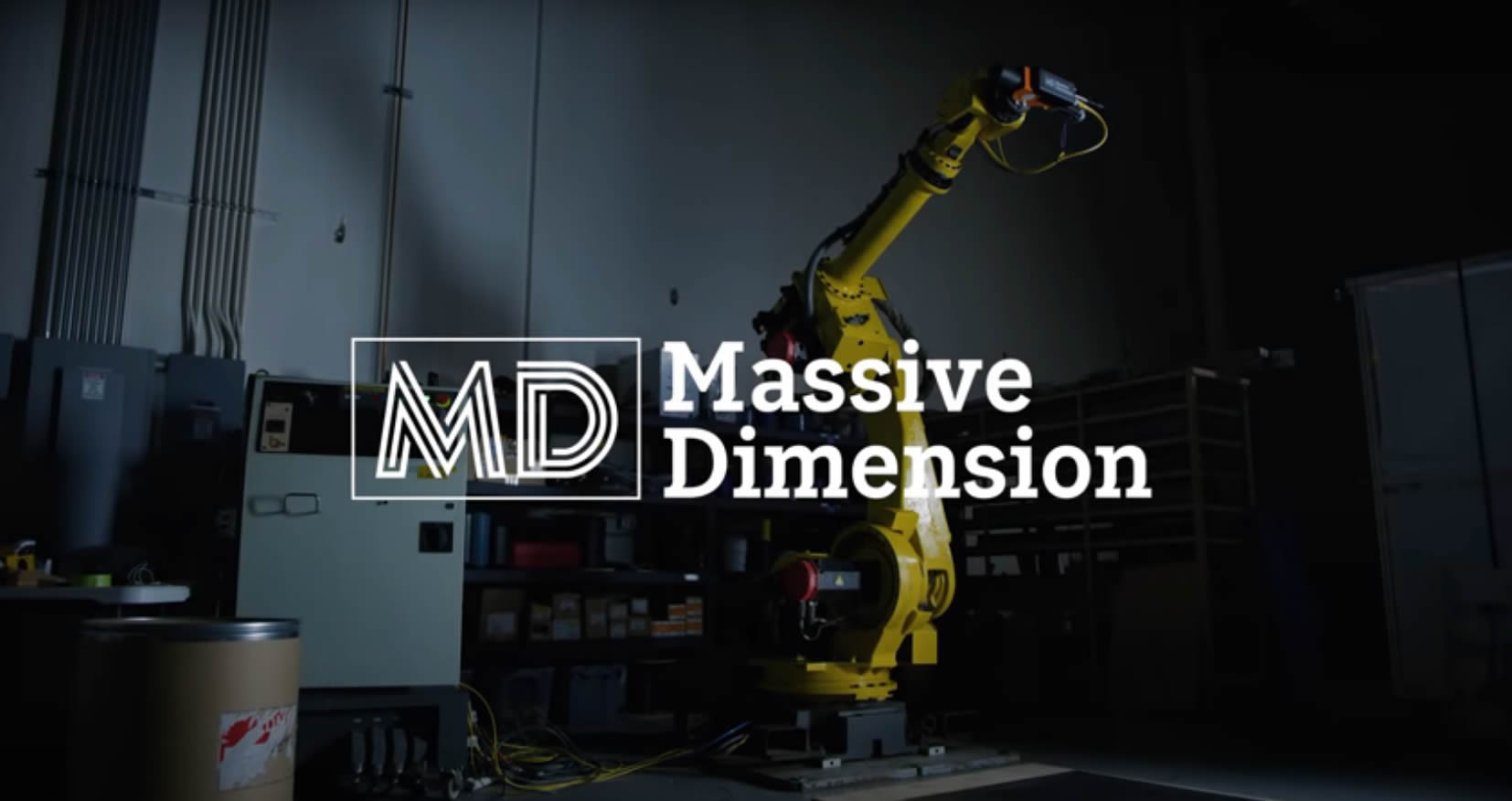We care about the materials we sell and the success of using our machines. This report was done with very extensive testing beyond what we typically do with the lab testing service we provide but a detailed processing report to give customers the best outcome, we hope that customers will take this and expand it. Work with faster settings, use additives, and get creative.
We also want customers to know that we will provide more test reports including the EX2.
rPETG Processing Report
Recycled Polyethylene terephthalate Glycol “rPETG” was extruded in the EX6 to compare the tolerances of the polymer with different Filabot Accessories. From testing, we saw that the tolerances of the material improved when using the Chrome Screw Addition over the Standard Stock EX6 Screw. We also noticed tighter tolerance when using the Melt Filter Nozzles. The best outcome we had when conducting the test was seen when we used both the Standard Melt Filter and the Extended (2x) Melt Filter and Chrome Screw. These had tolerances of 1.75mm +0.03mm diameter during testing. Further testing of the material will look into printability as well as strength comparisons.
About the material:
rPETG pellets are formulated for performance in filament extruders, providing high-quality diameter control. The higher melt flow of PETG permits higher speed 3D printing, similar to that of PLA. rPETG exhibits excellent impact strength, which makes it ideal for printing components that need to absorb impact shock without fracture.
rPETG is made from 100% recycled material (a fabric made from polypropylene-polyester blend) generated by Universal Composites, Inc. These pellets are usable with both our EX6 and EX2 systems for 1.75mm filament with +/-0.05mm tolerance.
- Test Technician: Nasser Abdel-Fatah
- Test Number(s): ET200709NA01 & NA02, ET200713NA01, ET200713NA01, and ET200716NA01 & NA02.
- Plastic Name: rPETG
- MSDS: https://cdn.shopify.com/s/files/1/0236/7897/files/MSDS_PET-G.pdf?v=1585071518
- Manufacturer: Universal Composites Inc.
- Supplier: Filabot.
- Additives: None.
- Material Form: Pellets Round, clear/light colors.
Extrusion Test Notes
Material preparation: None.
Grinding: None.
Drying: Yes, 12hours 55C/130F.
Extrusion Setup: EX6. Airpath(2X). Filameasure SPC Unit with Tablet, and Spooler.
Note on Extruder: Prior to extrusion of the material the machine needs to be 100% clean (both the barrel and the nozzle) it has been noticed that the material does not mix with other polymers, this leads to the rPETG sticking to the screw or barrel-making it impossible to extrude consistently. Normally one can go from polymer to polymer without having to clean the machine but its advised to clean before rPETG extrusion.
Extrusion Results: The above test numbers were able to generate filament at 1.75mm with a tolerance of +0.05mm. The settings, speeds, and additions are in the correct range to generate filament. All testing was done using the same settings only the accessories changed during testing. All Melt Filters used a 60 and a 20 Mesh insert.![]()
Test number:
Materials were extruded in the EX6 with the following settings:
Heat zone settings:
● Front: 185 degrees Celsius
● Middle: 180 degrees Celsius
● Back: 175 degrees Celsius
● Feed: 50 degrees Celsius
Fans Settings:
● Front: Mid
● Middle: Mid
● Feed: Max
● Motor: Max
EX6 Power:
● D.C. Volts: 30
● D.C. Amperes: 5+
Nozzle Used:
● Standard Nozzle Test number: ET200709NA01
● Standard Melt Filter: Test number: ET200709NA02
● Extended (2X) Melt Filter Test Number: ET200713NA01
● Extended (3X) Melt Filter Test Number: ET200716NA01
● Size: 1.75mm
Screw Used:
● Standard Stock Screw Test number: ET200709NA01 & NA02
● Chrome Screw Test number: Et200713NA01, ET200716NA01 & NA02
Airpath Settings:
● Number of Airpath’s: 2
● Fan Speed: 100% & 100%
● Magnets: 5 used along Airpath. End, Center, Front.
● Tape: No.
Spooler Settings (0.5kg spool):
● Drive: mid to slow
● Traverse: 30%
Notes on Equipment
The positioning of Equipment:
When extruding the polymer space the EX6 50mm (2in) away from the first Airpath. Have no space between Airpath 1 and Airpath 2. And space the Spooler 30cm (1-foot) between Airpath 2 and the Spooler.
About the Standard Melt Filter Nozzle:
The Filabot Melt Filter Nozzle is used to help decontaminate your recycled materials for a clean, consistent filament. This nozzle includes a stainless steel mesh screen to filter small contaminants that have slipped through the cleaning and grinding process. The filtering of these contaminants reduces the chances of clogging the printer nozzle.
About the Extended 2x Melt Filter Nozzle:
This “extra length” improves output consistency, keeping your filament extrusion to the appropriate range. Use 2X Melt Filter Nozzle to help decontaminate your recycled materials for a clean, consistent filament. The
2x nozzle improves laminar flow (less die stress at exit) and allows the filament to cool slightly during exit compared to stock. The 2x nozzle works best up to 50 volts.
About the Chrome Screw:
EX6 standard extrusion screw, upgraded with chrome plating. This new feature provides a slippery surface compared to the stock screw this allows for an easy glide of materials. This screw is preferred for tight tolerance extrusion.
Results
Once temperatures and power were determined on the EX6 adjustments were made to the Spooler “drive” to improve the tolerances. From 12:36:00 to the first tick on the graph (See Graph 1) was before the material was placed on a spool. When spooled the material had to be readjusted. Once the polymer was in a suitable range we stopped adjusting the “drive” on the Spooler. The polymer was able to stay consistent for 20 mins before starting to swing to higher diameters.
Once temperatures and power were determined on the EX6 adjustments were made to the Spooler “drive” to improve the tolerances. From 09:45:00 to the second tick on the graph (See Graph 2) was before the material was placed on a spool. When spooled the material had to be readjusted. Once the polymer was in a suitable range we stopped adjusting the “drive” on the Spooler. The polymer was able to stay consistent for 30 mins before starting to swing to higher diameters.
Once temperatures and power were determined on the EX6 adjustments were made to the Spooler “drive” to improve the tolerances. From 15:10:00 to the first tick on the graph (See Graph 3) was before the material was placed on a spool. When spooled the material had to be readjusted. Once the polymer was in a suitable range we stopped adjusting the “drive” on the Spooler. The polymer was able to stay consistent for 40 mins before starting to swing to higher diameters. We also noticed more tolerances of + 0.03mm for three 5 min intervals.
Once temperatures and power were determined on the EX6 adjustments were made to the Spooler “drive” to improve the tolerances. From 11:20:00 to the first min. on the graph was before the material was placed on a spool. When spooled the material had to be readjusted. Once the polymer was in a suitable range we stopped adjusting the “drive” on the Spooler. The polymer was able to stay consistent for 40 mins before starting to swing to higher diameters. We also noticed more tolerances of +0.03mm for 10 mins. One highlight of 2X Melt Filter & Chrome Screw was the easier time to get the material into range and onto the spool. This test generated the least amount of waste to be reprocessed.
Once temperatures and power were determined we were able to use the Spooler Once temperatures and power were determined on the EX6 adjustments were made to the Spooler “drive” to improve the tolerances. From 14:20:00 to the first min. on the graph (See Graph 5) was before the material was placed on a spool. Once the polymer was in a suitable range we stopped adjusting the “drive” on the Spooler. The polymer was able to stay consistent for 10 min intervals before starting to swing to higher and lower diameters. We also noticed lesser tolerances having a range of + 0.10mm.
The reason for these higher tolerances can be reduced to the nozzle. The extra length can lead to cooling within the nozzle. This is because the radiant heat from the front zone does not make it to the end of the nozzle. Further testing with the 3X Melt Filter will involve insulating the extra length to see if that generates tighter tolerances.
Links for More Information:
- rPETG: https://www.filabot.com/collections/filament/products/rpetg-pellets
- Standard Melt Filter: https://www.filabot.com/collections/components/products/ex6-melt-filter-nozzle-style-x
- Extended Melt Filter: https://www.filabot.com/collections/components/products/extended-melt-filter-nozzle
- Chrome Screw: https://www.filabot.com/collections/components/products/ex6-extruder-screws
- EX6 Bundle: https://www.filabot.com/products/ex6-bundle
- Filalogger Bundle: https://www.filabot.com/collections/spooler/products/filameasure-inline-filament-measurement
- Additional Airpath: https://www.filabot.com/collections/components/products/filabot-airpath
- Universal Composites Website: https://scrappvc.com/materials-pvc.html
Want to see more?
Send us an email at contact@filabot.com if you have any questions or would like to receive a folder with video samples from the test as well as screenshot and Excel data for the above tests.
Related Posts
Improve Filament Output Consistency with Melt Filter Nozzles
Use the Filabot Melt Filter Nozzle to help decontaminate your recycled materials for a clean, consistent filament. The stock nozzle is good for lower output applications where the voltage is under 25 volts.
The 2x nozzle performs better because it provides more laminar flow (less die stress at exit) and allows the filament to cool slightly during exit compared to stock. The 2x nozzle works up to 50 volts.
The 3x nozzle is used for very high index plastics like PET. It aids in the pull down on exit and allows the filament to cool even more than the 2x.
---------------------------------
FILAMEASURE Inline Filament Measurement and SPC Unit
Finally, the perfect way to measure filament while extruding. The Filabot Filameasure is the perfect addition to the Filabot Spooler, this addition mounts to the Filabot Spooler and measures freshly extruded filament.
The inline measurement allows for real time adjustments to dial in diameter for the best possible filament. No more need for consistent caliper checking with this tool. Another great feature of the Filameasure is the SPC Unit one can attach to it. With the Filalogger software one can record and save in real time filament spooled or polymers tested! This is upper handy for on the cuff adjustments and troubleshooting needs. The Filameasure and SPC unit will allow to compare and contrasts your data with other plastics and extruder settings to see what works best for you!
We feel very strongly about the value this addition can bring to you and your extrusion making! To help with the support of our product we have a couple YouTube videos you can check out here. Also, check out the Filameasure here on our website! Be on the lookout for new products to improve your recycling and extrusion needs!













